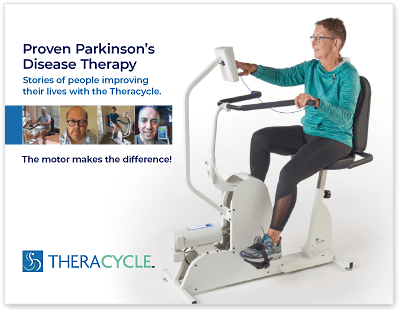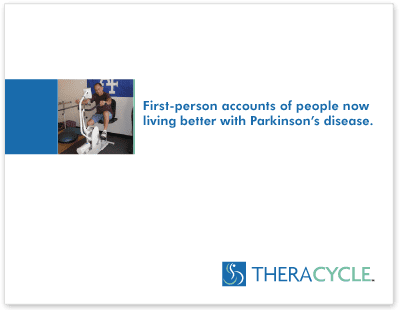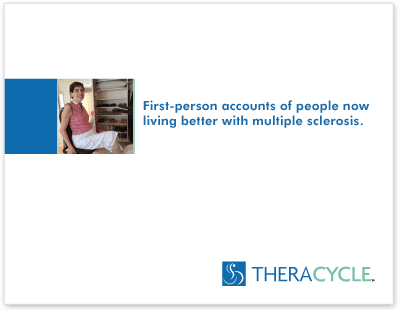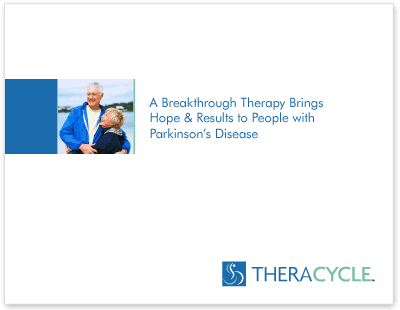- ›
- Resources
- ›
- Exercise Program for Neurological Disorders
Exercise Program for Neurological Disorders
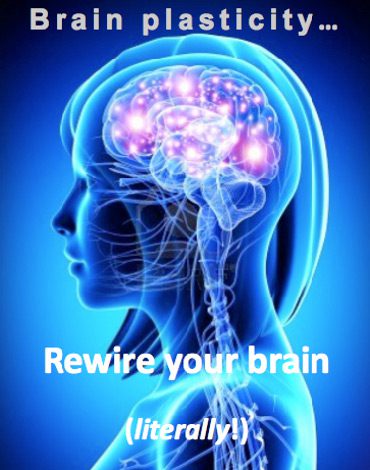 When it comes to neurological disorders such as Parkinson’s Disease, Multiple Sclerosis, and stroke, medical experts are always conducting research to try to find ways to slow the progression of symptoms. Whether it is through medication, physical therapy, or exercise, there are many ways to battle the symptoms of these conditions. Join us as we dig into the benefits of exercise for neurological disorders, and learn how exercise improves brain function, and specifically how high repetition exercises promote neuroplasticity in the brain, or brain plasticity.
When it comes to neurological disorders such as Parkinson’s Disease, Multiple Sclerosis, and stroke, medical experts are always conducting research to try to find ways to slow the progression of symptoms. Whether it is through medication, physical therapy, or exercise, there are many ways to battle the symptoms of these conditions. Join us as we dig into the benefits of exercise for neurological disorders, and learn how exercise improves brain function, and specifically how high repetition exercises promote neuroplasticity in the brain, or brain plasticity.
Benefits of Exercise for Neurological Disorders
There are many reasons why exercise is good for your body. Whether is it reducing the odds of developing heart disease, lowering your blood pressure, losing weight, preventing depression, or just looking better, physical activity has many positive results on the human body. However, in this article, we are focusing on one singular result of exercise, and that is the benefits exercise has for people with neurological disorders. According to Clinical Therapeutics, while “these neurologic diseases currently have no cure, exercise may have a significant and direct impact on not only their symptoms but also potentially to change the course of disease progression.”
Digging into the findings of Sports Neurology expert Dr. Vernon William, “physical activity promotes beneficial changes in the brain that may help memory, cognitive function and motor skills… Regular exercise is associated with the increased production of growth factors, chemicals that affect the health of existing brain cells and the survival of new ones, and an actual increase in volume in the selected brain regions that control thinking and memory.
In addition, one of the biggest correlations that have been found over time is the undeniably positive effects exercise has had on those suffering from Parkinson’s Disease. Motor neurons in the brain are affected by this condition, causing them to produce insufficient amounts of dopamine, a type of chemical messenger that transmits signals of movement, causing changes in gait, balance, coordination, and overall motor function of the affected person. A cure does not yet exist for this disorder, but regardless of what state of the disease a person is in, as they start exercising they are likely to experience benefits, and may even slow the progression of the disease.”
Repetitive Exercise and Neurological Disorders
Repetitive Exercise and Parkinson’s
When it comes to Parkinson’s Disease, there has been an increased interest in research on how exercise effects PD symptoms. Research from the Parkinson’s Outcomes Project, the largest-ever clinical study of Parkinson’s, found that people with PD who engaged in at least 2.5 hours of exercise a week had a better quality of life than those who didn’t exercise at all or who started exercising later. Establishing early exercise habits is an essential part of overall disease management, which is why neurologists now recommend exercise as part of most PD treatment plans, according to the Parkinson’s Foundation.
More so, the Parkinson’s Foundation also points out how high repetition exercises are important for driving changes in the brain. “Your program needs to push your brain as well as your muscles. Your therapist will help you challenge yourself by trying different exercises, setting goals for improvement, and working harder (for example, by increasing repetitions). Scientists believe that learning this way will lead to better brain changes.”
Neuroplasticity and Parkinson’s
When digging into the how the brain’s natural plasticity can affect people who suffer from Parkinson’s Disease, the Good Vibes Consultants provide many details explaining how neuroplasticity can undamage the brain. “We now know, that, through the science of Neuroplasticity, the brain has the natural ability to reorganize itself by forming new neural pathways and connections and is capable of change even after childhood, on into maturity, and even old age. Brain reorganization occurs by forming new neural pathways to bring about a needed function. This is put in place in the brain by mechanisms such as “axonal sprouting”, where undamaged axons grow new nerve endings to reconnect neurons whose links were severed or impaired. Neuroplasticity also means undamaged axons can also grow nerve endings to connect with other undamaged nerve cells. For example, if damage is done in one hemisphere of the brain the other undamaged hemisphere may take over some of its functions. This is achieved by stimulating the neurons through certain activities… where the brain compensates for damage by forming new communications between intact neurons.”
A helpful and informative resource for understanding the effect that exercise and neuroplasticity have on Parkinson’s Disease is the following video by Dr. Melita Petrossian, Neurologist and Director at Pacific Movement Disorders Center by the Pacific Neuroscience Institute.
Repetitive Exercise and Multiple Sclerosis
As stated above, through science and research, there have been many links to how exercise is an effective way to help reduce Multiple Sclerosis symptoms. Specifically, when taking a look at Physical Therapist, Dr. Gretchen Hawley’s findings, the repetitive movement of your exercise plan is vital when it comes to strengthening and improving your mobility. “High repetitions of good quality movement is the goal. The more repetitions you practice, the more times your brain is attempting to find a neural pathway/connection to help your muscles get stronger. This is neuroplasticity working at its finest.”
Neuroplasticity and Multiple Sclerosis
You might be wondering how neuroplasticity can help reduce Multiple Sclerosis symptoms. The MS Wellness Route describes how neuroplasticity is the brain’s ability to form new connections. “For people with MS, it’s the ability to go around the MS damage to form a new pathway. Creating new connections isn’t something that happens overnight. It takes a lot of commitment… Neuroplasticity is looking very promising for people with MS. According to one study, after five weeks of cognitive training, MS patients showed a “significant improvement in their neuropsychological performance.” The brain has the ability to adapt to damage caused by MS.”
Repetitive Exercise and Stroke
When recovering from a stroke, patience is always preached. Through physical therapy and exercise, however, those recovering from a stroke can accelerate the recovery process. Specifically, there has been significant evidence that high repetition exercises can vastly improve stroke recovery time. According to Saebo, “repetition is especially beneficial for stroke survivors who seek to regain motor function, strength, and coordination. Consistent repetition that re-establishes communication between the damaged parts of the brain and the body is crucial in stroke rehabilitation… Research has shown that stroke survivors who use repetition to promote neuroplasticity enjoy significant progress in their recovery. In one study, patients who initially struggled with grasp-and-release exercises demonstrated increased cortical reorganization after adhering to a repetitive rehabilitation regimen.”
Neuroplasticity and Stroke
Through recent research on the effects that neuroplasticity has on those recovering from a stroke, there has been noteworthy progress in how neuroplasticity is the ability to heal the brain. Digging deeper into the insights provided by Saebo, “neuroplasticity is the brain’s ability to form new synapses, or connections between neurons, especially in response to a brain injury. The nervous system compensates for damage by reorganizing the neurons that remain intact. To form new connections, the involved neurons must be stimulated through consistent activity… Stroke survivors can encourage neurogenesis through frequent therapy, as well as at-home practice. Careful, diligent practice also ensures that new synapses and neurons do not lead to additional issues or symptoms.”
Another helpful resource for understanding the effect exercise and neuroplasticity have on those recovering from a stroke is the following video by Dr. Claudia Wheeler, Medical Director for Adult Outpatient Rehabilitation Services at Rhode Island Hospital, as she explains neuroplasticity.
Theracycle and Forced Exercise
At Theracycle, an exercise program for neurological disorders that we recommend is referred to as a forced exercise regimen in order to reduce symptoms caused by a neurological condition. A Theracycle therapy bike allows patients to engage in a forced exercise regimen, or assisted cycling therapy, which allows the patient to perform exercises one normally cannot perform with traditional exercise equipment. A Theracycle also assists patients to perform high repetition exercises, which can help stimulate neuroplasticity to create new neural pathways for improved motor function and mobility
Theracycle’s revolutionary smart motor assists those with neurological conditions to exercise at a rate, pace, and duration greater than what they can do on their own and to achieve a speed that has been shown to reduce symptoms due to Parkinson’s, MS, stroke and other neurological conditions. The quiet motor delivers all the benefits of rigorous exercise even on days when your symptoms may otherwise prevent you from safely working out. It’s the motor that makes the difference.
Patients who have used the Theracycle have shown increased range of motion and decreased spasticity, improved muscle tone, strength and balance control. Further, use of the Theracycle has increased the physical endurance and improved the psychological outlook of these patients.” Dr. Thomas F. Morgan
Assistant Professor of Clinical Neuroscience
Brown University School of Medicine
To learn how a Theracycle can specifically help you with your neurological condition, read our customer testimonials and contact us for additional information.




